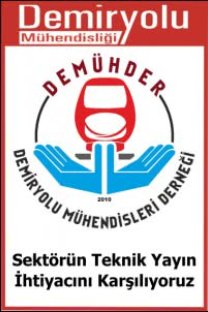Şehir İçerisinde Açılan Tünellerde Portal Şev Stabilitesi ile Tünel Kazı İlişkisine Bir Örnek (T7 Tüneli, Ankara-Sivas Yüksek Hızlı Tren Projesi (Kayaş-Elmadağ Kesimi))
An Example of the Relationship Between Portal Slope Stability and Tunnel Excavation in the Urban Area-(T7 Tunnel, Ankara-Sivas High Speed Train Project (Kayaş-Elmadağ Section))
___
- [1] L.v Rabcewicz, “The new austrian tunnelling method, Part One,” Water Power, pp 453–457, 1964.
- [2] L.v. Rabcewicz, “The new austrian tunnelling method, Part Two,” Water Power, pp 511–515, 1964.
- [3] L.v. Rabcewicz, “The new austrian tunnelling method, Part Three,” Water Power, pp 19–24, 1965.
- [4] E.B. Aygar, C. Gökçeoğlu, “Ankara-istanbul yüksek hızlı tren projesi, t13 tüneli fay zonunda karşılaşılan sorunlar ve çözüm önerileri ankara-istanbul hıgh speed raılway project, the problems encountered at t13 tunnel fault zone and solutıon suggestıons,” IMCET 2019 / Antalya / Turkey / April 16 . 19, Proceedings 26th International Mining Congress and Exhibition of Turkey, 2019.
- [5] E.B. Aygar, C. Gökçeoğlu, “Problems encountered during a railway tunnel excavation in squeezing and swelling materials and possible engineering measures: a case study from turkey.” Sustainability, 2020, 12, 1166, https://doi.org/10.3390/su12031166, 2020.
- [6] E.B. Aygar, C. Gökçeoğlu, “Evaluation of collapse mechanism and portal interaction of a high-speed railway tunnel (t29 tunnel, turkey),” Eurock 2021, Torino. 2021.
- [7] E.Poşluk, S. Dalgıç, İ. Kuşku, E.A. Poşluk, “Heyelan ıslahında gereken dayanma kuvvetinin limit denge yöntemi ile belirlenmesi,” İstanbul Yerbilimleri Dergisi, C.27, S.2. 77-88, Y.2014, 2017.
- [8] E.B. Aygar, C. Gokceoglu, “Effects of portal failure on tunnel support systems in a highway tunnel”. Geotech Geol Eng 39, 5707–5726.https://doi.org/10.1007/s10706-021-01859-z. 2021
- [9] A. Can, Y. Baskose and C. Gokceoglu, “Stability assessments of a triple-tunnel portal with numerical analysis (south of Turkey)”. Geotechnical Research, https://doi.org/10.1680/jgere.21.00028. 2022
- [10] Karayolları Genel Müdürlüğü, Karayolları Teknik Şartnamesi, 2013.
- [11] L.v. Rabcewicz, J. Golser, “Principles of dimensioning the supporting system for the “new austrian tunnelling method,” Water Power, Marc, 88-93. 1973.
- [12] L. Müller, “Removing misconceptions on the new austrian tunnelling method,” Tunnels & Tunnelling International;10(8):29–32. 1978.
- [13] Yüksel Proje, Kayaş-yerköy demiryolu kesim-1 (km:12+263-74+100) tünel jeoteknik raporu (t1, t2, t3, t4, t5, t6 ve t7), 2011.
- [14] N.R. Barton, R. Lien, J. Lunde, “Engineering classification of rock masses for the design of tunnel support,” Rock Mech. 6(4), 189-239. 1974.
- [15] N. R. Barton, F. Løset, R. Lien, J. Lunde, “Application of the q-system in design decisions,” In Subsurface space, (ed. M. Bergman) 2, 553-561. New York: Pergamon.1981.
- [16] N.Barton, “Application of q-system and index tests to estimate shear strength and deformability of rock masses,” In Workshop on Norwegian Method of Tunnelling (pp. 66–84). New Delhi, India,1993
- [17] Z.T. Bieniawski, “Engineering classification of jointed rock masses,” Trans S. Afr. Inst. Civ. Engrs 15, 335-344. 1973.
- [18] Z.T. Bieniawski, “Rock mass classification in rock engineering,” In Exploration for rock engineering, proc. of the symp., (ed. Z.T. Bieniawski) 1, 97-106. Cape Town: Balkema. 1976.
- [19] Z.T. Bieniawski, Engineering rock mass classifications. New York: Wiley. 1989.
- [20] Fugro Sial, “Ankara-sivas demiryolu projesi kayaş-kırıkkale arası kesim-1 (kayaş-elmadağ) (km:12+263-45+440) Tünel 7 Giriş Portalı Destek Sistemi Hesap Raporu”, 2019
- [21] P. Marinos, E. Hoek, “Gsi: a geologically friendly tool for rock mass strength estimation,” In: Poceedings of the GeıEng2000, International conference on geotechnical and geological engineering, Melbourne, Technomic publishers, Lancaster, pp 1422-1446
- [22] E. Hoek, P. Marinos, “Predicting tunnel squeezing,” Tunnels and Tunnelling International. Part 1 – November 2000, Part 2 – December 2000.
- [23] Roclab, 2011, Version 1.032, www.rocscience.com
- [24] RocScience, 2020. Phase2 8.0 User Guide, [Accessed: 17-Nov-2021]. https://www.rocscience.com/downloads/phase2/ Phase2_ TutorialManual,
- [25] J. Jacky, “The coefficient of earth pressure at rest.” J. Soc. Hung. Archit. Eng. 78, 355–388. 1944.
- [26] U.S. Department of Transportation Federal Highway Administration, Technical manual for design and construction of road tunnels -civil elements, Publication No:FHWA-NHI-10-34, 2009
- ISSN: 2149-1607
- Yayın Aralığı: Yılda 2 Sayı
- Başlangıç: 2014
- Yayıncı: Demiryolu Mühendisleri Derneği
Pantograf Boynuz Hatalarının Derin Öğrenme ve Görüntü İşleme Teknikleri ile Tespiti
Mehmet YILMAZ, Veysel YÜKSEL, Mahmut Ömer BAŞTÜRK, Yusuf Engin TETİK, Mustafa GÜNER, Tolgahan KAYA
Yeni LCR Tipi Traverslerin Demiryolu Hat Rijitliğine Etkisinin Araştırılması
Demiryolu Hat Geometrisinin Fraktal Analizi
Murat Vergi TACİROĞLU, Mustafa KARAŞAHİN, Mesut TIĞDEMİR, Hakan IŞIKER
Raylı Sistem Traverslere, Bazalt Tozu İlavesinin Buz Çözücü Tuz Etkisine Katkısı
Raylı Sistem Araçlarının Koşum Takımı Üzengisi için Topoloji Optimizasyonu Uygulaması
Mustafa GÜNAY, Emre ULUSOY, Mert İSTEK
Kurtpınar (Ceyhan) Bazaltlarının Demiryolu Balastı Olarak Kullanımının Değerlendirilmesi
Katener Sistemlerindeki İzolatör Kusurlarının Derin Öğrenme ile Tespiti
